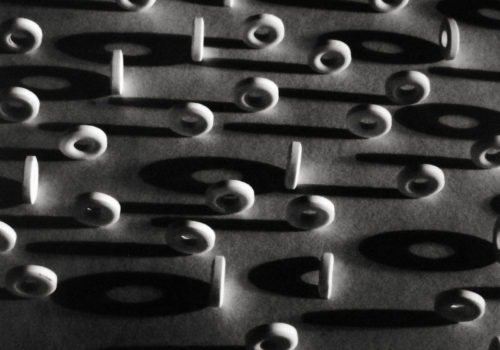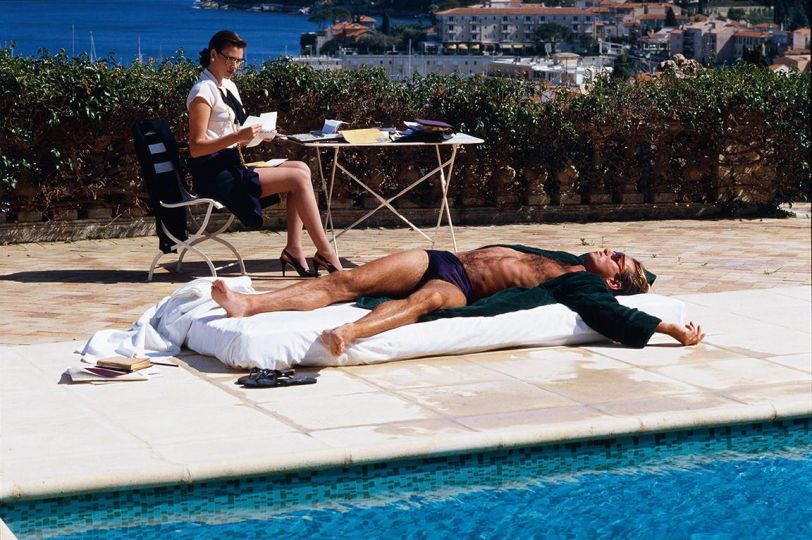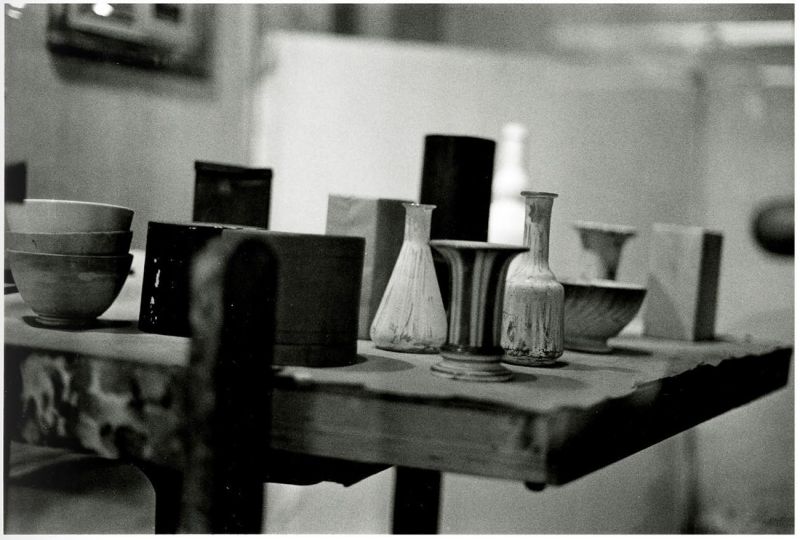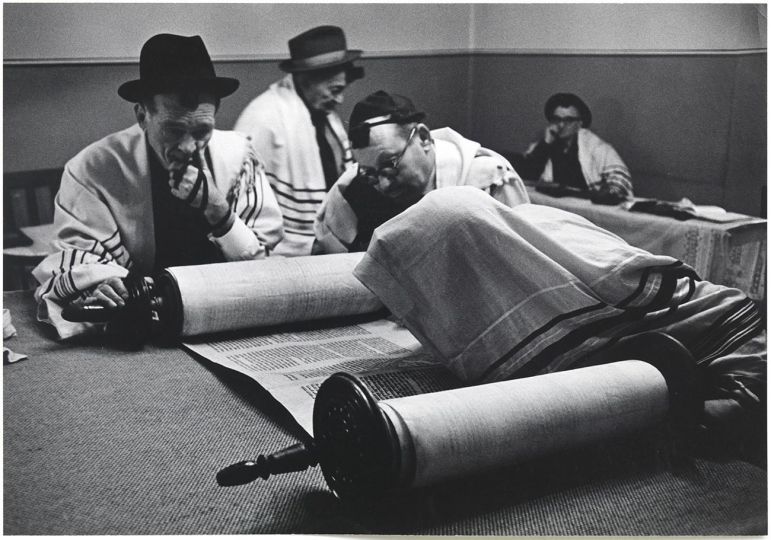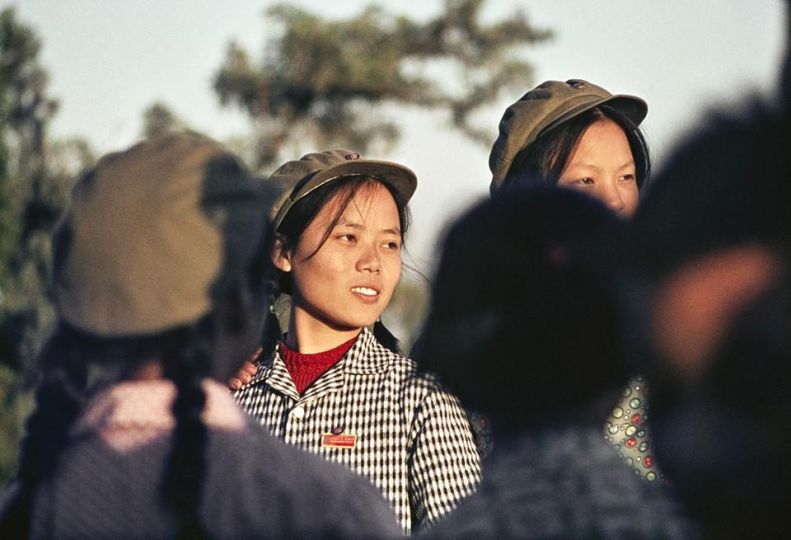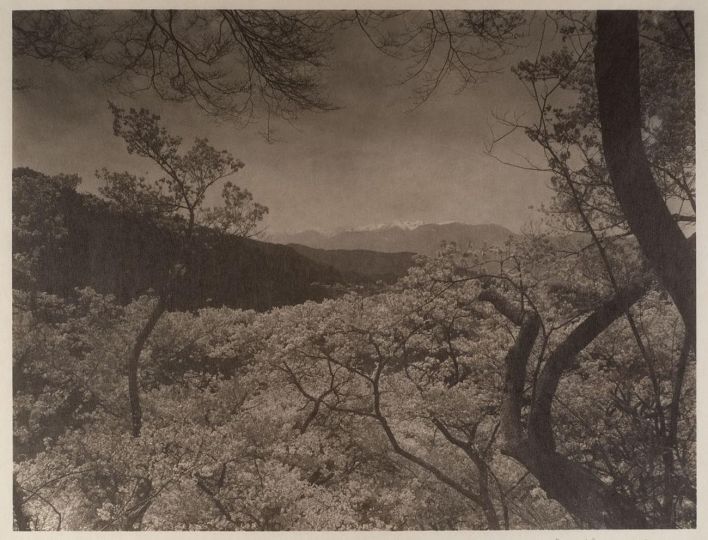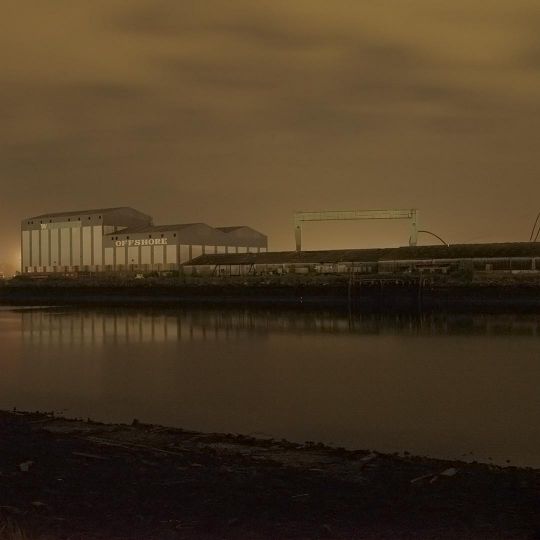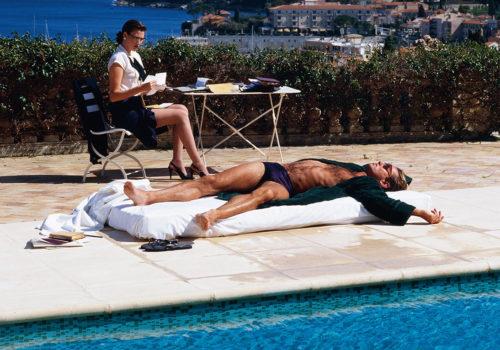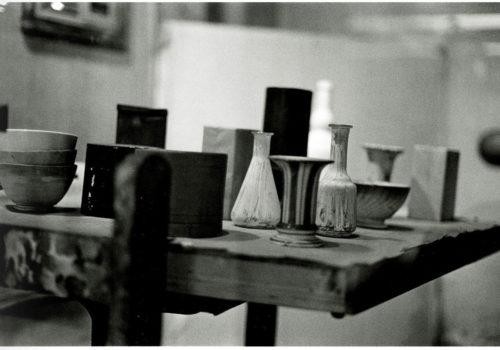This is the fifteenth installment of the online series by Peter Fetterman Gallery called the Power of Photography highlighting hope, peace and love in the world. We invite you to enjoy and reflect on these works during this time.
Ruth Bernhard (1905-2006)
Lifesavers, 1930
© Estate of Ruth Bernhard, Princeton University/Courtesy Peter Fetterman Gallery
Ruth Bernhard moved from Berlin to New York in 1927 at the invitation of her father, Lucian Bernhard, who was a successful graphic designer. Ruth’s first job in New York was as a darkroom assistant to Ralph Steiner. She disliked the work and was soon let go. With $90 of severance pay she purchased her first 8×10 view camera in 1929.
Bernhard’s first serious photograph was Lifesavers in 1930. One can discern clearly in this photograph the visual influence of New York in the late 1920’s and the Art Deco and surrealist art movements happening during that era. Bernhard simply recalled going to Woolworths and buying things to photograph at home. The photograph of the Lifesavers, she said, was inspired by the busy traffic on Fifth Avenue.
Lifesavers quickly gained the interest of Vogue’s art director, Dr. M.F. Agha, and he arranged for its publication in 1931, making it Bernhard’s first published image.
From her very first photograph to her last, from her still lifes to her iconic female nudes, Ruth had a very clear vision of every image she was creating. Ruth never would “take” a photograph, but rather she would “make” a photograph. She was a creator and an artist in every possible sense.
Arthur Leipzig (1918-2014)
Chalk Games, New York City, 1950
© Estate of Arthur Leipzig/Courtesy Peter Fetterman Gallery
Arthur shot this image, one of his greatest, in Prospect Place in Brooklyn. He was a product of the Photo League, a group of idealistic photographers who all wanted to use the medium of photography to make the world a better place. They were all concerned with social justice. Most were the children of working class immigrants as Arthur was.
His work is full of warmth and emotion and back then the streets were the only place that children could escape their cramped and restricted surroundings. Arthur knew that New York was like theater all the time. There is always something going on and he wanted to be part of it.
Arnold Newman (1918-2006)
Otto Frank, father of Anne Frank, Anne Frank House, Amsterdam, The Netherland, 1960
© Estate of Arnold Newman/Courtesy Peter Fetterman Gallery
I enjoyed a close relationship with Arnold. He loved to talk, ”garrulous” might be the most apt word. But he had great stories to tell and he always gave me great insight into the many artists he had known and that I admired, often over lunch at “Cafe des Artistes” his favorite restaurant in New York conveniently located in the apartment building he lived in. I just respected his work so much.
One day he called me and told me he had to give a lecture in San Diego at The Museum of Photographic Arts which was mounting a large exhibition for him. If he came to see me first in Santa Monica would I drive him there and make sure all went smoothly? So for a couple of days I became his driver, roadie, bodyguard, “minder” and protector from his multiple fans. I was happy to do it as I knew I would be the recipient of even more stories about his illustrious sitters and life…
This has always been one of his most powerful portraits for me. Arnold was on vacation in The Netherlands in 1960. The editor of Look magazine calls him and implores him to go the opening of the Anne Frank House and get a portrait of Otto Frank, Anne’s surviving father who had worked so hard to make this happen as a tribute to his daughter. Arnold agrees to interrupt his vacation but Otto Frank refuses to have his portrait taken given the occasion is so emotional for him. Arnold persists and finally his powers of persuasion and charm and his credentials prevail and Otto Frank reluctantly agrees. But it is not working. Arnold asks Otto to accompany him alone to the attic where the family hid in secret during the war until they were arrested and sent to the Camps. Otto was the sole survivor. They climb to the top of the attic together but it is still not working out. Suddenly the church bells that Anne wrote about in her diaries start to ring out and Otto overcome with even more emotion leans against the support beams lost in thought and Arnold takes the shot.
He told me that afterwards the two just hugged each other and cried together for several minutes.
Brian Hamill (b. 1946)
John Lennon, The Dakota, NYC, 1975
© Brian Hamill/Courtesy Peter Fetterman Gallery
It’s hard to imagine that John Lennon would have been 80 years old this coming Dec. 8th had he not been murdered forty years ago. The thought that he was only 40 years old when he died is so sobering and sad.
For people of my generation he was so much an iconic symbol of our own idealism and dreams. His presence and music spoke to us. His vulnerability echoed our own.
Brian’s beautiful image taken on the rooftop of The Dakota on February 25th, 1975 is not only a love poem to this special soul but also a love poem to the city of New York which became a refuge and home to Lennon’s restless spirit as it has been home to so many creative minds who voluntarily or involuntarily ended up living and being nurtured there in the hope of finding some stability in their turbulent lives.
The Elvis pin Lennon is wearing on his jacket’s lapel makes the image for me. John always acknowledged Elvis’s inspiration as one of the reasons he wanted to become a rock’n roller.
I can’t imagine not being able to listen to Lennon’s music and never stop wondering what else he would have accomplished if he were still living…
As Brian says,
“He was authentic. He was sincere. He was centered. He was a stand up guy.”
Steve Schapiro (b. 1934)
Satchel Paige’s Hands, 1962
© Steve Schapiro/Courtesy Peter Fetterman Gallery
I have seen grown adults cry in front of this photograph.
I love quiet images that tell complex stories, such is the case with this Steve Shapiro “portrait” of Satchel Paige except it’s not a portrait in the traditional sense of the word. You don’t see his face. It’s not just a photograph of a pair of hands either. These are Satchel Paige’s hands, that belonged to probably the greatest pitcher in the history of baseball. But it is also a key Civil Rights image because Paige’s life is entwined with the history of the Civil Right’s Movement. And for that matter American History as a whole. Denied entry to the Major Leagues because of his race he began his professional career in the Negro Leagues in 1926. His life was not easy, born into a poor family of 12 children he eked out a living barnstorming the country playing anywhere he could get a gig. He soon became that league’s most famous showman because of his natural talent, self-discipline and dedication. He was a huge draw for both white and black fans. But after all the acclaim that was heaped on him by his white fans after the game was over there were still places he couldn’t eat at or hotels where he was not allowed to sleep in. He finally broke through to the Major Leagues as a 42 year old rookie after Jackie Robinson paved the way and he was eventually inducted into the Baseball Hall of Fame in 1971, but that took so many years. His story is both inspiring and heartbreaking and equally important to reflect on today.
Joe DiMaggio called him, “The best I ever faced and the fastest,” and Paige admitted “I ain’t ever had a job, I just always played baseball.”
Don Worth (1924-2009)
Coleus, San Francisco, CA, 1975 (Printed 1980
© Estate of Don Worth/Courtesy Peter Fetterman Gallery
Like so many photographers over the past century, Don Worth found his way into photography when he discovered the work of Ansel Adams. In the early 1950s, meeting Adams would only further solidify his lifelong career in photography. Worth became Ansel’s personal assistant in 1956 until 1960. The two maintained a close friendship until Adams death in 1984. Like many disciples of Adams, Don took to photographing the natural landscape, however he found his true passion in his work when he turned his camera towards the more intimate details of plants.
Growing up on a small farm in Iowa, Worth was cultivating exotic plants by the age of ten. His childhood experiences shaped his artistic sensibilities and early love for exotic horticulture. Later in life, Don’s house in Mill Valley, CA would become a flourishing half-acre botanical oasis. His personal gardens served as his private retreat and the focus of hundreds of his photographs.
Don’s photographs have an incisive clarity and quiet, meditative mood. His photographs are a departure beyond the world of normal appearances and transport us into a reflective harmony with nature that only Worth could reveal with his camera.
Andre Kertész (1894-1985)
Underwater Swimmer, 1917 (Printed 1970’s)
© Estate of Andre Kertész/Courtesy Peter Fetterman Gallery
This is probably Kertesz’s earliest masterpiece and an example of what greatness was yet to come.
Born in Hungary, he was drafted into the army in 1914 and was wounded in Poland in 1916. The bullet injury to his right arm left it partially paralyzed and required that he undergo daily physical therapy which included swimming. Watching his fellow patients he noticed the distortions in the water, and the play of sunlight on it which was constantly changing.
I always have to remind myself, to my surprise, that this image was taken in 1917. It looks like it could have been shot yesterday it is beyond modernist and has the abstract tension of a figure apparently motionless but about to move.
Several years ago the wonderful David Hockney visited the gallery. As we know he has also taken many great photographs and knows a lot about photography and is steeped in the history of art. Underwater Swimmer was on the wall and I couldn’t resist the temptation to politely say, “I know you know this image, right?” As I am sure consciously or unconsciously it must have influenced his celebrated California pool paintings. He gave me a smile like a Cheshire Cat.
It reminds me of the famous quote which has been attributed originally to Picasso,
“Good artists borrow. Great artists steal.”
Hannes Kilian (1909-1999)
Piccadilly Circus, London, 1955 (Printed 1950’s)
© Estate of Hannes Kilian/Peter Fetterman Gallery
I hadn’t come across the work of Hannes Kilian before I discovered this extraordinary vintage print of my home town. I found out that he was a freelance German photojournalist who had worked for major publications like Time, Picture Post, Stern and Vogue. That’s what’s so amazing about collecting photography, you never stop learning and discovering things.
In his later life he came to specialize in dance photography and his special images of the Stuttgart Ballet made that ballet company famous throughout the world. But this image of Piccadilly Circus in the 1950’s just bowled me over. Of course that young man in the center of the image could have been me as it was a place I frequented often and his stance of dreaming and looking at the bright lights was one I often employed…well let’s just say for sake of argument it is me.
It is one of the greatest London photos I have ever seen. I was happy to see a print of it at an exhibition at Tate Britain a few years back called “Another London” where it was also on the catalogue’s back cover.
Cecil Beaton (1904-1980)
Charles James Dresses, 1948
© Estate of Cecil Beaton, Southeby’s Archives/Courtesy Peter Fetterman Gallery
Cecil Beaton was a true renaissance man – writer, diarist, playwright, painter, illustrator, set designer, costume designer, dandy and not least one of the great 20th Century photographers.
This is one of his greatest photographs. On June 1st, 1948, nine fashion models, including the great Carmen Dell’Orefice (still working and going strong at 89 years old!) and Dorian Leigh, gathered at French and Co., the celebrated antiques dealer on Park Avenue to have their photograph taken decked out in Charles James’s exquisite gowns. James was perhaps the most revered designer of his generation who had his European counterparts like Dior and Balenciaga in awe. Every garment he produced was deemed to be a work of art. James and Beaton had first met at school at Harrow in England.
Just imagine how difficult it was to choreograph and light nine models and get nine separate “performances“ out of them to create a cohesive narrative. Very few photographers had the experience and genius to pull it off but out of it came one of the most important images in the history of fashion photography.
Beaton’s pithy wit was sometimes on a par with Oscar Wilde. As Cecil once said,
“The truly fashionable are beyond fashion.”
Bruce Davidson (b. 1933)
Brooklyn Gang (Cathy by cigarette machine), 1959
© Bruce Davidson/Courtesy Peter Fetterman Gallery
I have great respect for photojournalists like Henri Cartier-Bresson, W. Eugene Smith, Sebastião Salgado and Bruce Davidson who dedicate a big chunk of their lives to telling a story by living with their subjects for an extensive period of time before taking a single shot, so that they truly understand in depth the story they are telling us.
Such is the case with Bruce’s “Brooklyn Gang” series. He was only 25 years old at the time, a skinny kid who blended in with them and was accepted as one of their peers. He captured their way of life, their problems, their insecurities, their pain. All teenage angst is universal. Don’t we all remember ours when we were trying to figure out who we were and where we were going?
I just love the “coolness” of this image. Cathy, a Brigitte Bardot clone, combing her hair. The boy, someone akin to James Dean, rolling up the sleeve of his T-shirt reaching for a pack of cigarettes, hanging out at Coney Island, their temporary refuge…
As Bruce pointed out these kids came from tough environments with very little social support or understanding and he realized early on in his career with this powerful photo-essay which seems as fresh today as the day it was shot that,
“All people need to be seen. Nothing greeted them except my camera.”
Peter Fetterman Gallery
2525 Michigan Ave, #A1
Santa Monica, CA 90404

